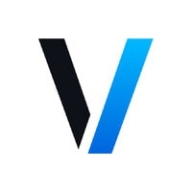

Veracode and Red Hat Advanced Cluster Security for Kubernetes offer security solutions competing in the cybersecurity domain. Veracode appears to have the upper hand in pricing and customer support, while Red Hat Advanced Cluster Security is favored for its extensive features and overall value.
Features: Veracode is recognized for its comprehensive scanning capabilities, integration with various development tools, and competitive pricing. Red Hat Advanced Cluster Security for Kubernetes is distinguished by its robust container security features, deep integration with Kubernetes ecosystems, and an extensive feature set preferred for Kubernetes environments.
Room for Improvement: Users of Veracode desire better reporting capabilities, more customizable dashboards, and enhanced user experience. For Red Hat Advanced Cluster Security, improved documentation, a more intuitive setup process, and addressing complex deployment issues are sought after improvements.
Ease of Deployment and Customer Service: Veracode is highlighted for its straightforward deployment process and responsive customer service. Red Hat Advanced Cluster Security provides excellent support during and after deployment, though it is considered more complex to deploy due to its advanced features.
Pricing and ROI: Veracode is noted for its competitive pricing and clear ROI, making it attractive for cost-conscious businesses. Red Hat Advanced Cluster Security, with a higher initial cost, delivers greater value over time through its advanced feature set, justifying the investment for many users.


Red Hat Advanced Cluster Security for Kubernetes is a Kubernetes-native container security solution that enables your organization to more securely build, deploy, and run cloud-native applications from anywhere. With its built-in security across the entire software development life cycle, you can lower your operational costs, reduce operational risk, and increase developer productivity while improving your security posture immediately. In addition, Red Hat Advanced Cluster Security integrates with security tools and DevOps in an effort to help you mitigate threats and enforce security policies that minimize operational risk to your applications. It also enables you to provide developers with actionable, context-rich guidelines integrated into existing workflows, along with tooling to support developer productivity. The solution is suitable for small, medium, and large-sized companies.
Red Hat Advanced Cluster Security for Kubernetes Features
Red Hat Advanced Cluster Security for Kubernetes has many valuable key features. Some of the most useful ones include:
Red Hat Advanced Cluster Security for Kubernetes Benefits
There are many benefits to implementing Red Hat Advanced Cluster Security for Kubernetes. Some of the biggest advantages the solution offers include:
Reviews from Real Users
PeerSpot user Igor K., Owner/Full Stack Software Engineer at Maraphonic, Inc., says, “The solution allows teams to create their own virtual spaces and share resources. The most valuable feature is the ability to share resources.”
Veracode is a leading provider of application security solutions, offering tools to identify, mitigate, and prevent vulnerabilities across the software development lifecycle. Its cloud-based platform integrates security into DevOps workflows, helping organizations ensure that their code remains secure and compliant with industry standards.
Veracode supports multiple application security testing types, including static analysis (SAST), dynamic analysis (DAST), software composition analysis (SCA), and manual penetration testing. These tools are designed to help developers detect vulnerabilities early in development while maintaining speed in deployment. Veracode also emphasizes scalability, offering features for enterprises that manage a large number of applications across different teams. Its robust reporting and analytics capabilities allow organizations to continuously monitor their security posture and track progress toward remediation.
What are the key features of Veracode?
What benefits should users consider in Veracode reviews?
Veracode is widely adopted in industries like finance, healthcare, and government, where compliance and security are critical. It helps these organizations maintain strict security standards while enabling rapid development through its integration with Agile and DevOps methodologies.
Veracode helps businesses secure their applications efficiently, ensuring they can deliver safe and compliant software at scale.
We monitor all Container Security reviews to prevent fraudulent reviews and keep review quality high. We do not post reviews by company employees or direct competitors. We validate each review for authenticity via cross-reference with LinkedIn, and personal follow-up with the reviewer when necessary.